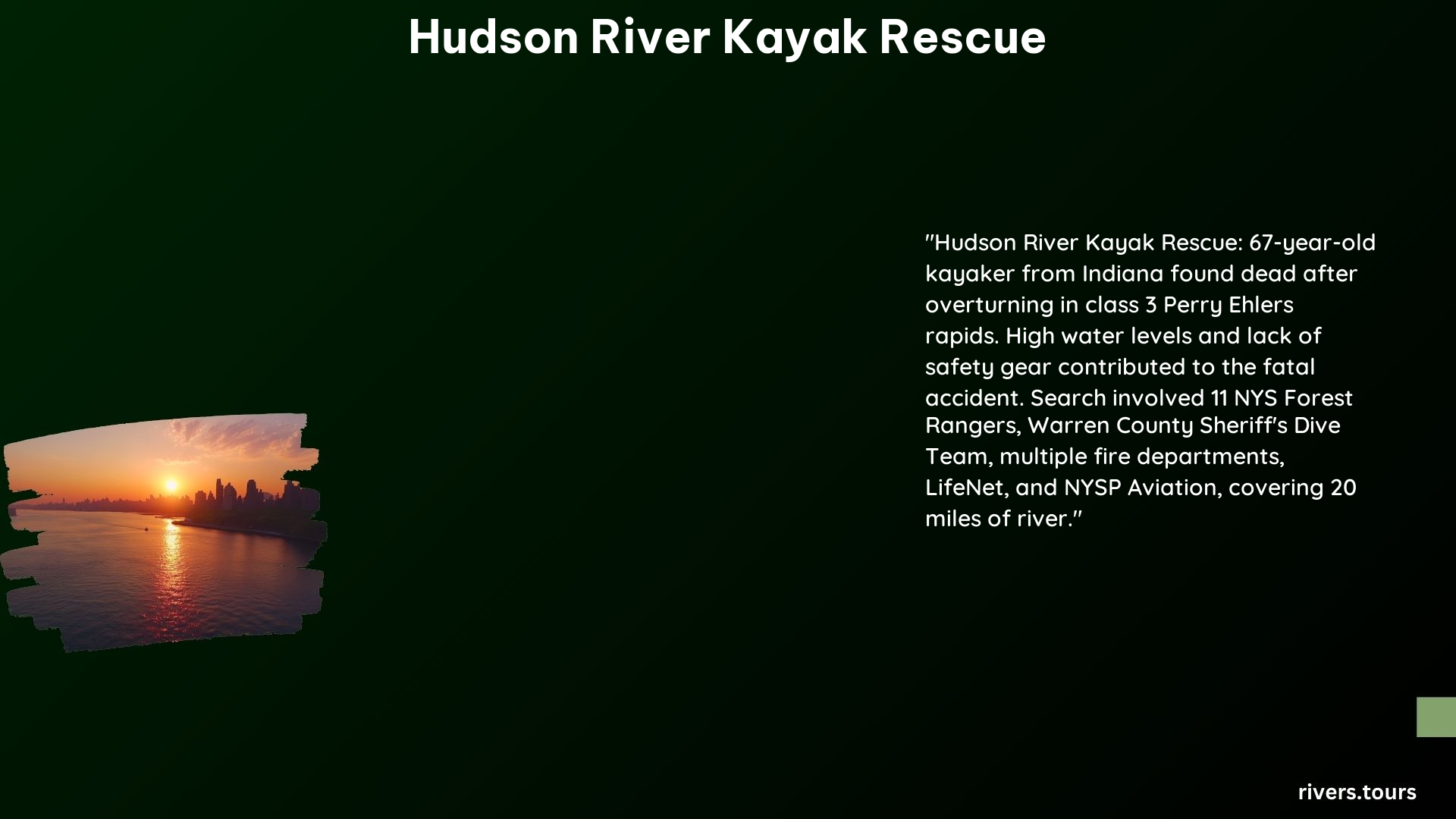Comprehensive Guide to Hudson River Kayak Rescue
The Hudson River, a majestic waterway that flows through the heart of New York, is a popular destination for kayakers and outdoor enthusiasts. However, the river’s strong currents, heavy boat traffic, and unpredictable weather conditions can pose significant challenges, making kayak rescue a critical skill for anyone venturing onto its waters. This comprehensive guide will equip you with the knowledge and strategies to ensure a safe and enjoyable kayaking experience on the Hudson River.
What Safety Precautions Should I Take?
-
Personal Flotation Devices (PFDs): Wearing a properly fitted PFD with a whistle attached is essential for visibility and emergency signaling. This simple step can make all the difference in a rescue situation.
-
Communication Devices: Carrying a handheld VHF radio tuned to Channel 13 allows you to communicate with commercial vessels, announce your presence, and receive important updates on vessel movements.
-
Emergency Gear: Packing a first aid kit, a repair kit for your kayak, a spare paddle, and a waterproof bag with essentials like a flashlight, extra batteries, and a multi-tool can help you address unexpected situations.
-
Reliable Means of Calling for Help: Ensure you have a reliable way to call for assistance, such as a cell phone or a personal locator beacon (PLB), in case of an emergency.
What Are the Common Hazards on the Hudson River?
-
Boat Traffic: Be aware of commercial vessels, ferries, and other fast-moving boats. Avoid crossing shipping channels and use designated kayak lanes when available.
-
Strong Currents: Understand the tidal patterns and currents on the Hudson River. Plan your trip accordingly to avoid strong currents, especially during full moons and storms.
-
Environmental Conditions: Monitor weather forecasts and be prepared for sudden changes. Wind speeds over 10 mph can significantly impact your kayak’s stability. Also, be cautious of underwater obstructions and bridge heights that vary with the tide.
How Do I Plan a Safe Trip on the Hudson River?
-
Tide Charts: Consult tide charts to plan your trip during optimal tidal conditions. Avoid paddling during strong tidal currents.
-
Weather Forecasts: Check weather forecasts before and during your trip. Be prepared for changing conditions and adjust your plan accordingly.
-
Calculating Safe Departure and Return Times: Plan your trip to avoid paddling during peak sun hours and strong currents. Launch and paddle against the current during the first half of your trip, and let the current carry you back during the second half.
What Should I Do in a Kayak Rescue Situation?
-
Assess the Situation: Quickly evaluate the severity of the situation and the number of people in distress. Determine if you can safely approach and provide assistance.
-
Call for Help: If the situation is beyond your capabilities, immediately call 911 or the U.S. Coast Guard for emergency assistance. Provide clear and concise information about the location and nature of the incident.
-
Approach Cautiously: If you decide to attempt a rescue, approach the distressed kayaker(s) cautiously, maintaining a safe distance to avoid capsizing your own kayak.
-
Offer Assistance: Extend a paddle or throw a rescue line to the distressed kayaker(s). Encourage them to hold onto the paddle or line, and then slowly pull them to safety.
-
Provide First Aid: If necessary, administer first aid and monitor the rescued individual(s) until emergency responders arrive.
-
Report the Incident: After the rescue, report the incident to the appropriate authorities, such as the U.S. Coast Guard or the local harbor master. This information can help improve safety protocols and rescue procedures for the Hudson River.
Remember, your safety should always be the top priority. If the situation is beyond your capabilities, do not hesitate to call for professional assistance. By following these guidelines and being prepared, you can enjoy the beauty of the Hudson River while minimizing the risks associated with kayaking.

